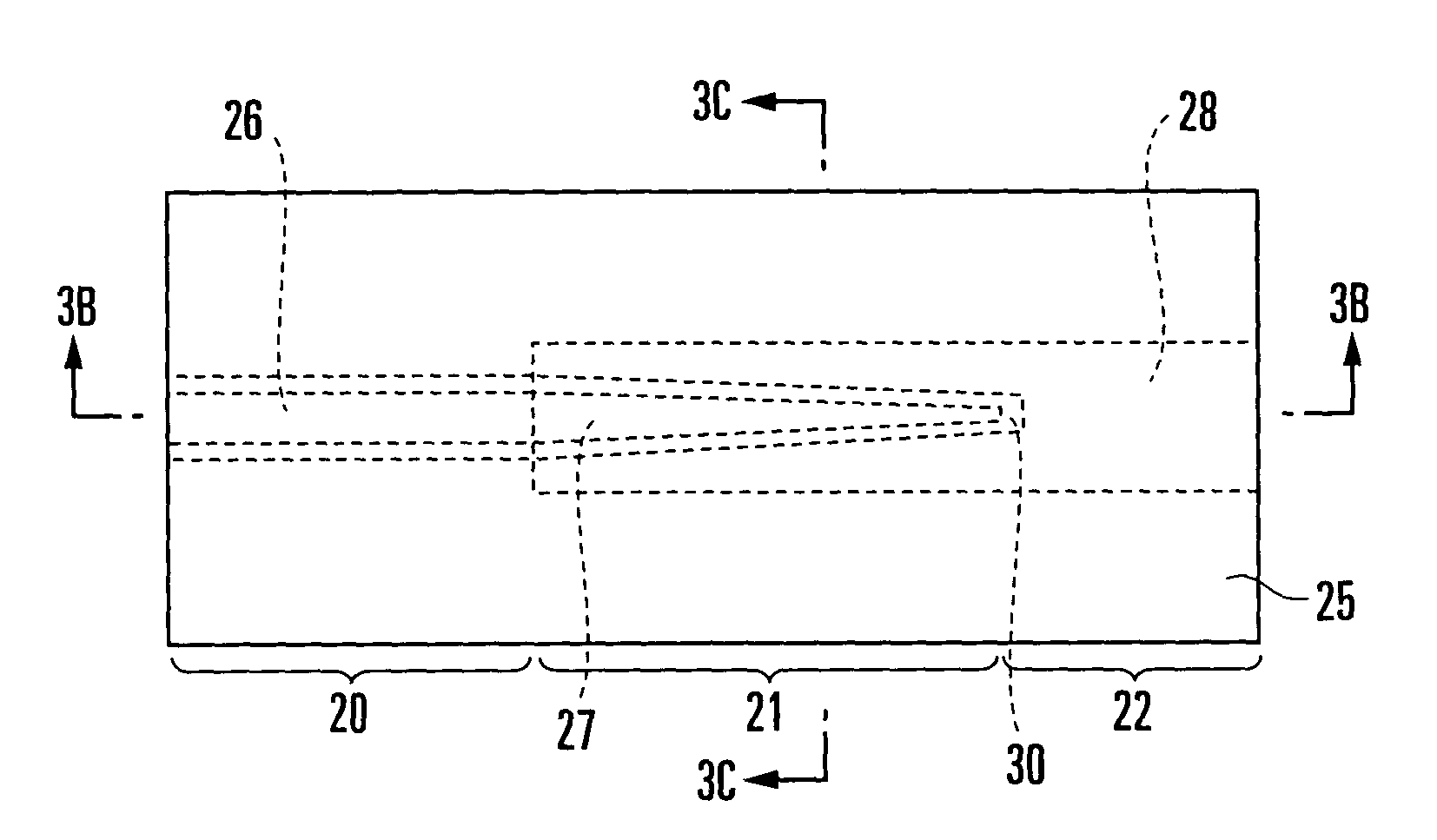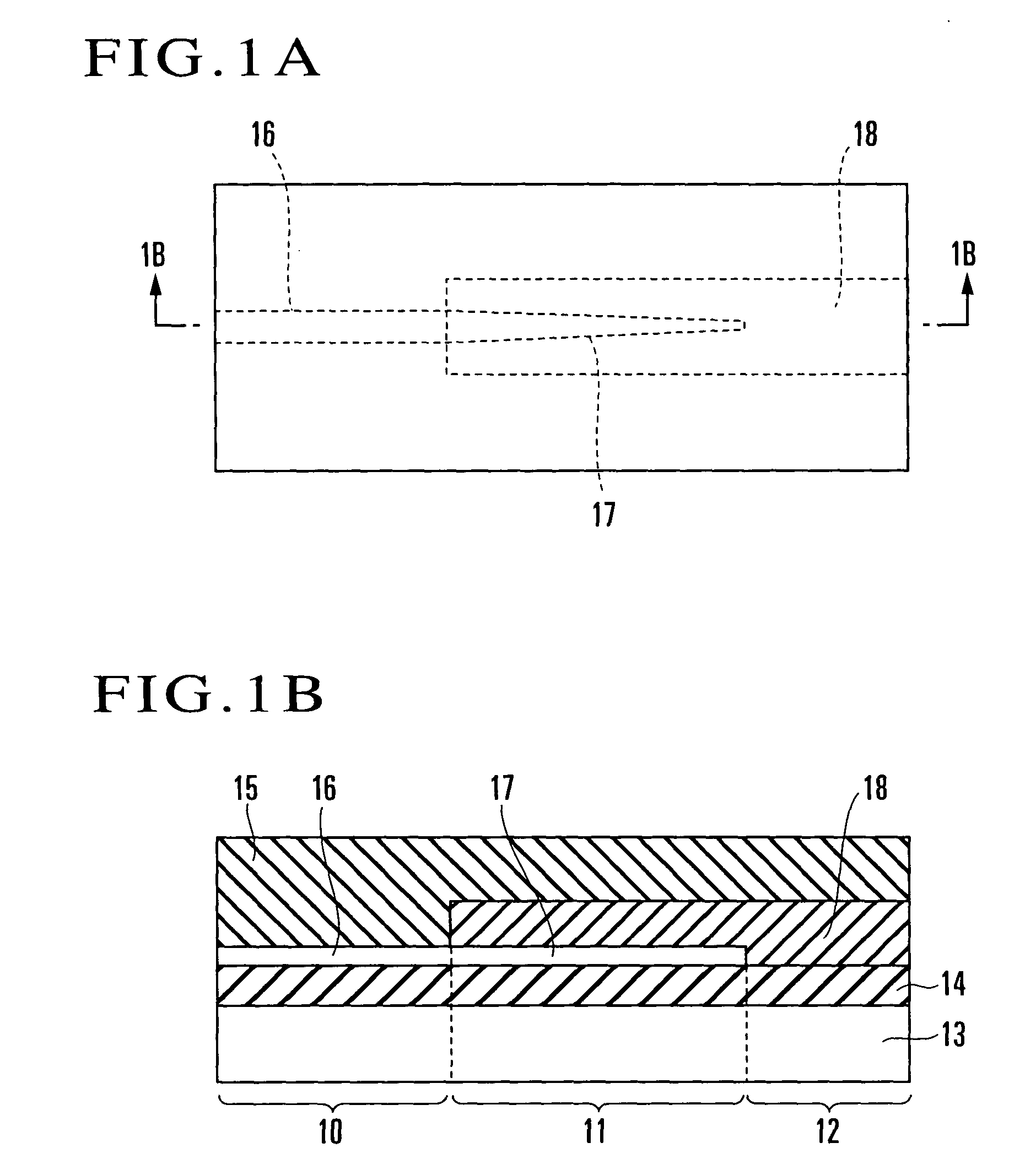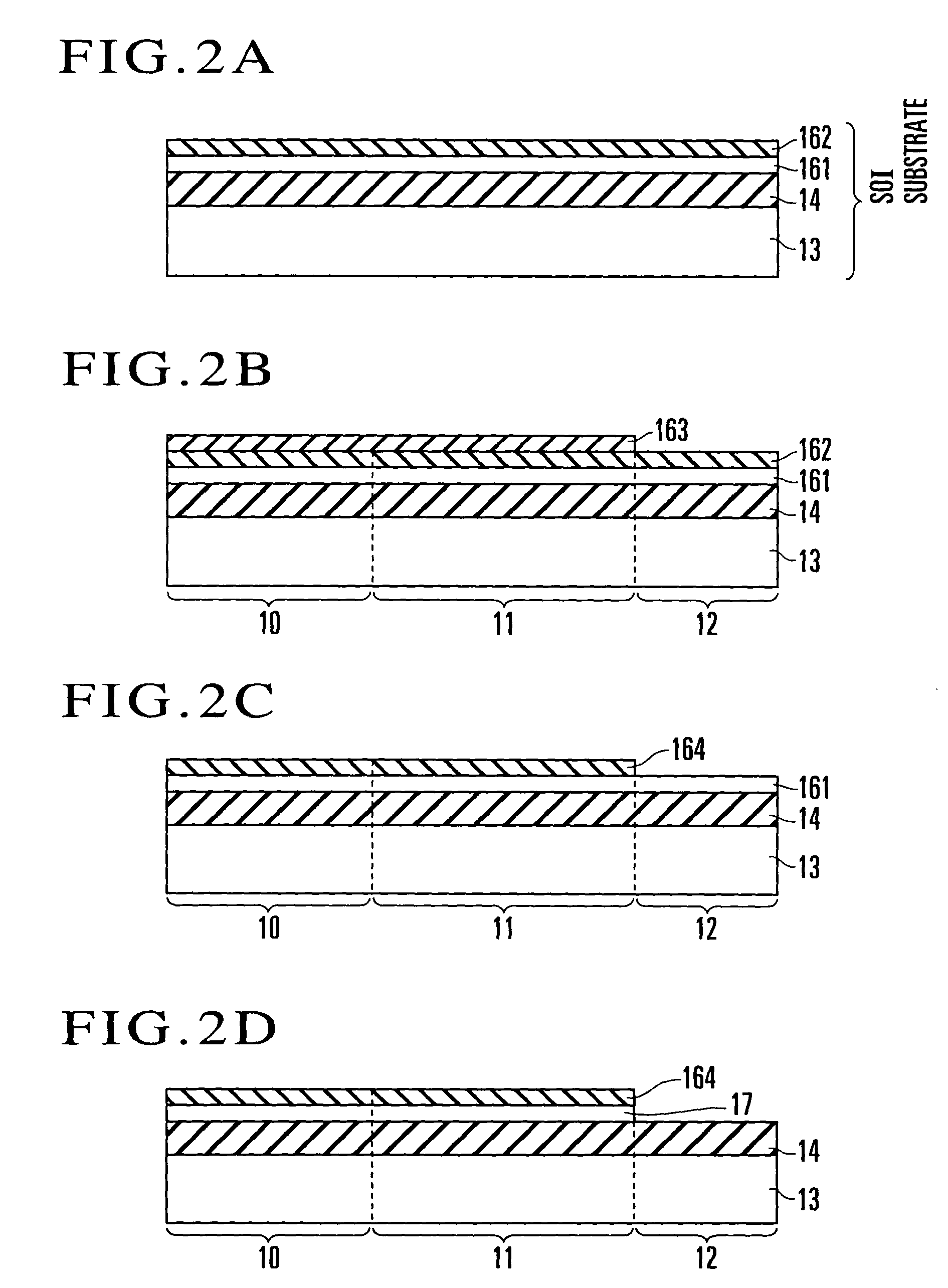Optical module and manufacturing method therefor
a technology of optical modules and manufacturing methods, applied in the field of optical modules, can solve the problems of increasing propagation loss, difficult to efficiently make direct connection between optical waveguides and general optical fibers, and affecting the efficiency of optical waveguides, and achieve the effect of high efficiency
- Summary
- Abstract
- Description
- Claims
- Application Information
AI Technical Summary
Benefits of technology
Problems solved by technology
Method used
Image
Examples
first embodiment
(First Embodiment)
[0054]FIGS. 3A to 3C show an optical module according to the first embodiment of the present invention. Referring to FIGS. 3A to 3C, reference numeral 20 denotes a wire-like first optical waveguide made of silicon; 21, a mode field size conversion portion; 22, a second optical waveguide connected to the first optical waveguide 20; 23, a silicon substrate; 24, an under cladding formed from a silicon oxide film and placed on the silicon substrate 23; 25, an over cladding made of a polymer; 26, a first core which is made of silicon and forms the first optical waveguide 20; 27, a tapered portion which is made of silicon like the first core 26 and formed such that the width dimension decreases toward its distal end while the height of a cross section (thickness) of the core 26 is kept unchanged; 28, a second core which is made of a polymer and formed as the core of the mode field size conversion portion 21 and second optical waveguide 22; and 30, a silicon oxide film.
[0...
second embodiment
(Second Embodiment)
[0073]FIGS. 7A to 7C show an optical module according to the second embodiment of the present invention. The same reference numerals as in FIGS. 3A to 3C denote the same part in FIGS. 7A to 7C. A characteristic feature of this embodiment is that a silicon oxide film 30 is formed to be adjacent to only the side surfaces of a tapered portion 27. This allows the tapered portion 27 to be shaped with high precision.
[0074]A manufacturing method for the optical module shown in FIGS. 7A to 7C will be described below with reference to FIGS. 8A to 8G.
[0075]The steps in FIGS. 8A to 8D are the same as those in FIGS. 4A to 4D in the first embodiment. In the first embodiment, the first core 26 of the first optical waveguide 20 and the tapered portion 27 continuous with the core 26 are formed by etching the silicon layer 31 by using the mask 29, and an oxidation process is performed after the mask 29 is removed. In this embodiment, an oxidation process similar to that in the fir...
third embodiment
(Third Embodiment)
[0083]This embodiment is a modification of the manufacturing method for the optical module shown in FIGS. 4A to 4H, and exemplifies only the part of the method, in particular, in which after a silicon layer serving as the first core is formed on an under cladding, a silicon oxide film is formed to cover the first core. The use of this embodiment makes it possible to manufacture an optical module in a shorter period of manufacturing time than the conventional method.
[0084]Referring to FIGS. 9A to 9C, reference numeral 111 denotes a silicon substrate; 112, an under cladding layer formed from a silicon oxide film (SiO2); and 113, a core serving both as the first core of the first optical waveguide and the tapered portion in the first embodiment described above. The core 113 is made of silicon and patterned into a thin wire. Reference numeral 114 denotes a silicon oxide film placed to cover the core 113. In this case, the width and thickness of the core 113 are differe...
PUM
 Login to View More
Login to View More Abstract
Description
Claims
Application Information
 Login to View More
Login to View More - R&D
- Intellectual Property
- Life Sciences
- Materials
- Tech Scout
- Unparalleled Data Quality
- Higher Quality Content
- 60% Fewer Hallucinations
Browse by: Latest US Patents, China's latest patents, Technical Efficacy Thesaurus, Application Domain, Technology Topic, Popular Technical Reports.
© 2025 PatSnap. All rights reserved.Legal|Privacy policy|Modern Slavery Act Transparency Statement|Sitemap|About US| Contact US: help@patsnap.com



